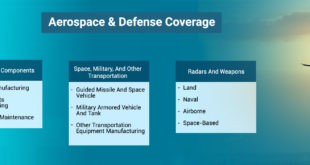During the 1999 Kargil War, operations of Indian Air Force to evict the intruding Pakistani soldiers from the Indian side of the border, were hampered as the only combat helicopter, the Mi-35, couldn’t operate at extremely high altitudes. IAF had to tell the Army that it had no helicopters that could take on the Pakistani positions at Batalik, Dras or other heights, and finally, it was decided to deploy Mirage jets to attack the entrenched Pakistanis.
As per reports, the armed forces are looking to induct as many as 1200 plus helicopters in the coming decade ranging from attack and high altitude reconnaissance to medium and heavy lift variants. Presently, the Indian military holds in its kitty approximately 600 helicopters of all types and class including specialized ones, but majority of these have far exceeded their life span and are either obsolete or nearing obsolescence – the largest component of this is the Chetak/Cheetah fleet.
HAL India has now developed an indigenous combat helicopter that can carry out operations even at the 19,600-feet high Siachen glacier. Designed and built by HAL, the Light Combat Helicopter is the only machine in the world that can carry out operations at such high altitudes. “Last year we successfully landed this helicopter at Siachen glacier, the only combat helicopter to do that in the world, said Unni Pillai, (Retd) Wing Commander and Chief Test Pilot, HAL.
After months of deliberations, India and Russia finally gave formal approval for a joint venture between Russian helicopters and Indian aeronautical public sector Hindustan Aeronautics Ltd (HAL) to manufacture 200 Kamov-226T helicopters, according to senior defence ministry official in the national capital.
HAL built indigenous helicopters
Armed with a nose gun, rockets, air-to-air and air-to-ground missiles, the LCH is a 5.8-tonne class chopper, heavily armoured and engineered for combat. LCH has a sleek and narrow fuselage, tail wheel type of tricycle crashworthy landing gear, crashworthy and self-sealing fuel tanks and armour protection.
HAL claims that the LCH is designed to carry out dedicated combat roles such as Air Defence, anti-tank, scout and support combat search/rescue missions. It incorporates a number of stealth features such as reduced visual, aural, radar and infra-red signatures and crashworthy landing gear, armour protection for better survivability.
Armed with a nose gun, rockets, air-to-air and air-to-ground missiles, the LCH is a 5.8-tonne class chopper, heavily armoured and engineered for combat. “The machine can carry weapons up to 1,000 kg.
The main fire arm of the LCH is the Nexter 20 mm cannon it can hold some 800 rounds of ammunition, with an effective range of 2500 feet, also it comes with four hard points two in each wing to carry unguided Rockets and guided Air to air or anti armour missiles, The LCH designed to carry set of two Mistral Air to air missiles for Air operations to shoot down enemy helicopters Turbo prop special mission Transports and low flying UAV’s, otherwise it can carry LAHAT Anti Tank or Helina Anti Tank missiles for Anti armour and ground operations, also the LCH can use combination of all the above missiles and Rocket pods.
The helicopter has a state-of-the-art cockpit with day/night targeting capability with a helmet pointed sight and electro-optical pod consisting of a Charge Coupled Device (CCD) camera/Forward Looking Infra-Red (FLIR)/ Laser Range Finder (LRF)/Laser Designator (LD), its battle survivability would be ensured by the self-protection suite consisting of radar/laser missile warning systems and Counter-Measures Dispensing System (CMDS). SAAB South Africa is providing the LCH’s electronic warfare suite.
The helicopter is powered by two Shakti engines. Pillai said the first limited series of 10 helicopters will be available to the Indian Air Force in the next four months. There are plans to produce LCH in large numbers to meet the operational requirements.
Russia Kamov 226 T Helicopters
A $1 billion inter-government agreement to manufacture the helicopters in India was finalised at the Indo-Russian Summit in Goa October 2016, in presence of Narendra Modi and Russian President Vladimir Putin. It was in December 2015 that it was first announced that the Kamov-226T would be the copter of choice.
Under a Indo-Russian governmental agreement, India is also buying 200 Kamov 226 T helicopters of which 60 would be built in Russia and supplied directly to the forces while the remaining 140 would be manufactured in a joint venture between Kamov and HAL and a private partner.
The cost of Kamov light-utility choppers to be manufactured indigenously is coming out to be almost 250 per cent as high as the cost of 60 such helicopters that would be built in Russia and supplied to India for operations in high altitude areas such as Siachen and Ladakh.
We have a particular operating environment and we are the best people to make as per our requirement. American machines don’t have a requirement to operate above 10,000-12,000 feet. Hence to enhance our operation capabilities, it is important we make in our country said (Retd) Wing Commander, Unni Pillai, Chief Test Pilot, HAL .
These light utility helicopters termed as a lifeline for high altitude operations used for high altitude posts, which are inaccessible by roads to supply ration, equipment, weapons and casualty evacuation missions.
High Altitude helicopters
These exceptional helicopters need to be as light as possible, because the air at high altitudes becomes incredibly thin, making it much harder for the main rotor and main rotor blades to provide the lift necessary to keep the helicopter at its current altitude (or to go higher!). Rotor blades and lift system designed for high altitude thin air.
The next design feature is one that keeps the engine from failing while in such an oxygen-deprived environment – and that design feature is a gas turbine engine. Gas turbine engines are lightweight and do really well at high altitudes. These engines are much larger and can perform much of the needed heavy lifting if it is placed in a helicopter that is relatively small.
Other technologies involved are cabin pressurization using pneumatic system and heating is required, ice protection, air tight cabin seals, ice protection, Crew oxygen system. All these system will increase the weight of helicopter so engine power must be increased.
.
References and Resources also include:
http://helimart.com/helicopter-resources/helicopter-repair-for-high-altitude.html
http://www.indiastrategic.in/topstories15.htm
http://indiatoday.intoday.in/story/kamov-226-t-helicopter-indian-army-hal-russia/1/960527.html
 International Defense Security & Technology Your trusted Source for News, Research and Analysis
International Defense Security & Technology Your trusted Source for News, Research and Analysis

